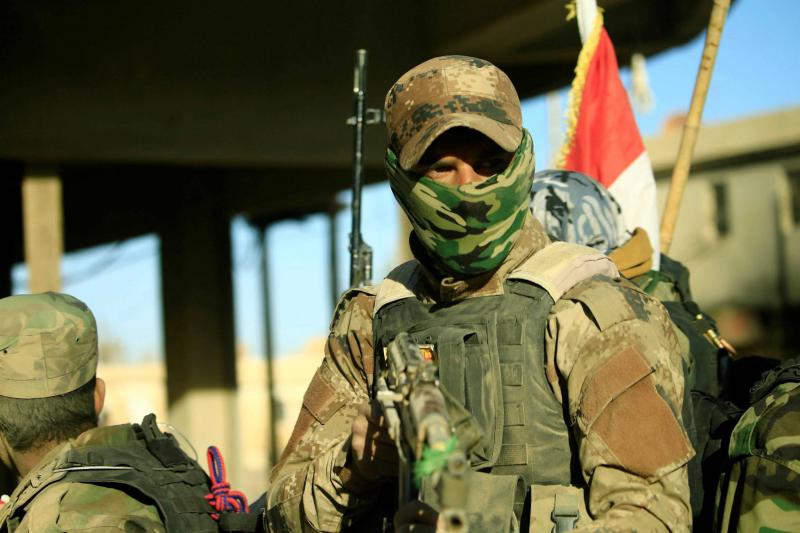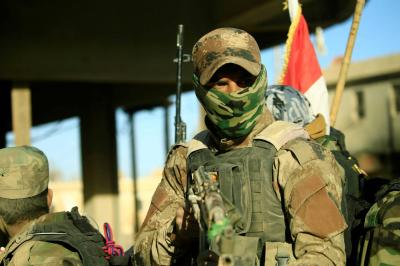The Pentagon announced that U.S. forces have bombed sites in Iraq used by Iranian-backed factions, particularly Iraqi Hezbollah. U.S. Secretary of Defense Lloyd Austin stated that the purpose of these strikes is to disrupt the capabilities of these Iran-allied militias. These strikes came after a drone attack targeted the Harir base, which houses American and coalition forces near Erbil Airport, resulting in "casualties," according to Iraqi authorities.
What is the Hezbollah Brigades in Iraq and who stands behind it? The term "Hezbollah" is associated with the Lebanese Hezbollah organization, but there is another group that emerged more than two decades later bearing the same name yet is separate from it, which is the "Hezbollah Brigades in Iraq." The Hezbollah Brigades were officially established in April 2007, in the city of Amara in southern Iraq. The brigades formed from the alliance of several Shiite armed factions, some of which emerged after the American invasion in 2003. These factions include Abu Al-Fadl Al-Abbas Brigade and others named after Karbala, Zaid Ibn Ali, Al-Akbar, and Al-Sajjad.
The Hezbollah Brigades describe themselves as a "resistant Islamic jihadist formation." According to their official website, the brigades see the Guardianship of the Jurist as the best way to achieve "Islamic governance in the time of the Hidden Imam," referring to the twelfth Imam according to Shia Twelver doctrine. The Hezbollah Brigades are directly linked to Iran, viewing the establishment of the Islamic Republic in Iran as a "great achievement" and consider it a crucial phase for paving the way for the establishment of a "state of divine justice and a form of Islamic governance through the Guardianship of the Jurist."
The brigades claim to work on thwarting what they call the American-Israeli project in the Middle East, and their members were among the first armed fighters to support the Syrian government during the popular protests that swept the country in 2011. The Hezbollah Brigades are part of the Popular Mobilization Forces in Iraq. They also announced their participation in the Al-Aqsa Flood battle launched by Hamas in Gaza.
There has been no announcement of a Secretary-General for the Hezbollah Brigades, although they have designated speakers for both military and civilian matters. The estimated number of fighters in the brigades is around seven thousand, according to unofficial figures. Their operational style is similar to that of Lebanese Hezbollah, and Iranian and Lebanese leaders, most notably Imad Mughniyeh, who was killed in Syria in 2015, have overseen their training.
Due to the extensive nature of the brigades' operations in Iraq and Syria, as well as their members considering themselves "ideological," the leadership of the organization classifies its casualties in battles into four categories: martyrs of the defense battalions, martyrs of the resistance to occupation, martyrs of creed and dignity, and martyrs of the guardianship. The Hezbollah Brigades in Iraq have four announced civilian institutions: the Mosques and Husseiniyyas Authority, the Al-Hadaf Foundation, the Zainabiya Foundation, and an institution for academic elites, in addition to other unannounced organizations believed to be dedicated to religious education, military recruitment, and economic projects.
The brigades, classified by the United States as a terrorist organization, have carried out numerous operations targeting American soldiers in Iraq. Leaked reports indicated that the brigades were involved in the kidnapping of a Qatari hunting team in December 2015 and that they were one of the parties that received a ransom of one billion dollars for the release of the hostages; however, the Qatari narrative states that it paid the money to the Iraqi government. The brigades are not represented by a political party but are part of the Popular Mobilization Forces that assisted government forces in their war against the Islamic State (ISIS).




